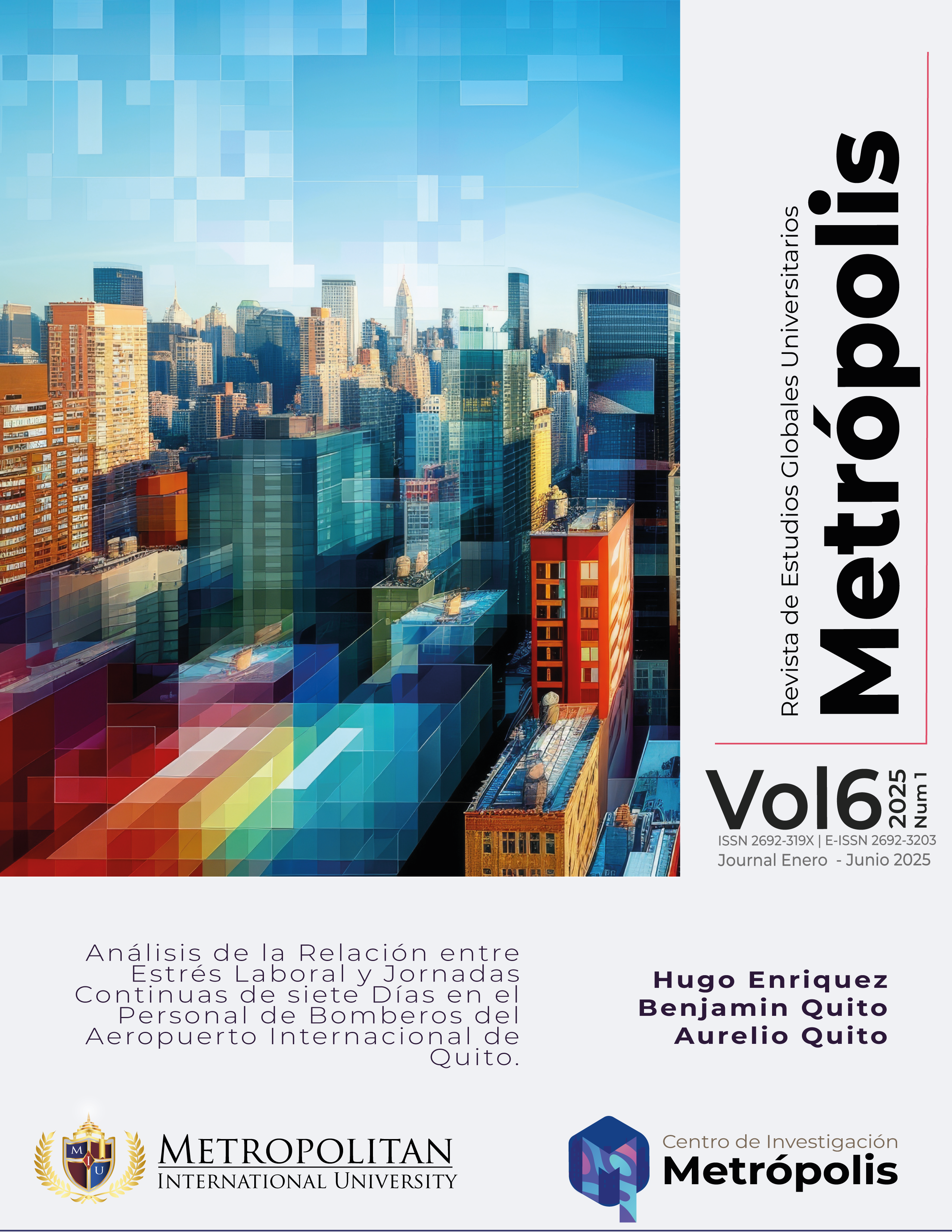Analysis the Relationship Between Work Stress and seven Day Continuous Shifts in Firefighters at Quit International Airport
Keywords:
Occupational Stress, Extended Shifts, Aircraft Firefighters, Chronic Fatigue, Labor RegulationAbstract
This study examined the relationship between occupational stress and continuous seven-day shifts among airport firefighters at Quito International Airport. Prolonged exposure to extended shifts significantly increased fatigue, negatively affected sleep quality, and diminished concentration abilities. Additionally, a clear negative impact on mental health was observed, manifesting in symptoms of chronic stress, anxiety, and emotional exhaustion. This compromised the ability of the firefighters to perform efficiently in emergency situations, which could potentially jeopardize operational safety. The results revealed that 50% of the respondents experienced elevated stress levels, 48% reported disturbances in their sleep, and 63% faced difficulties with concentration. These factors together increased the likelihood of operational errors. The absence of psychological support and the lack of sufficient recovery periods further exacerbated the situation, negatively affecting both emotional stability and safety performance. The continuous workload also contributed to reduced decision-making effectiveness, raising the risk of errors and accidents during emergency response operations. Based on these findings, the study strongly recommends restructuring work shifts to allow for adequate rest periods, implementing mental health programs, and reinforcing strategies to mitigate fatigue. The study also emphasized the urgent need for specific regulations governing rotating shifts at airports to safeguard the wellbeing of the personnel. By doing so, it would be possible to optimize emergency management performance and ensure higher operational efficiency. The implementation of these measures is expected to reduce the risks associated with occupational stress, enhance mental health, and strengthen the overall safety and operational effectiveness of operations during emergencies at the airport.

Downloads
Published
How to Cite
Issue
Section
License

This work is licensed under a Creative Commons Attribution-NonCommercial-ShareAlike 4.0 International License.



